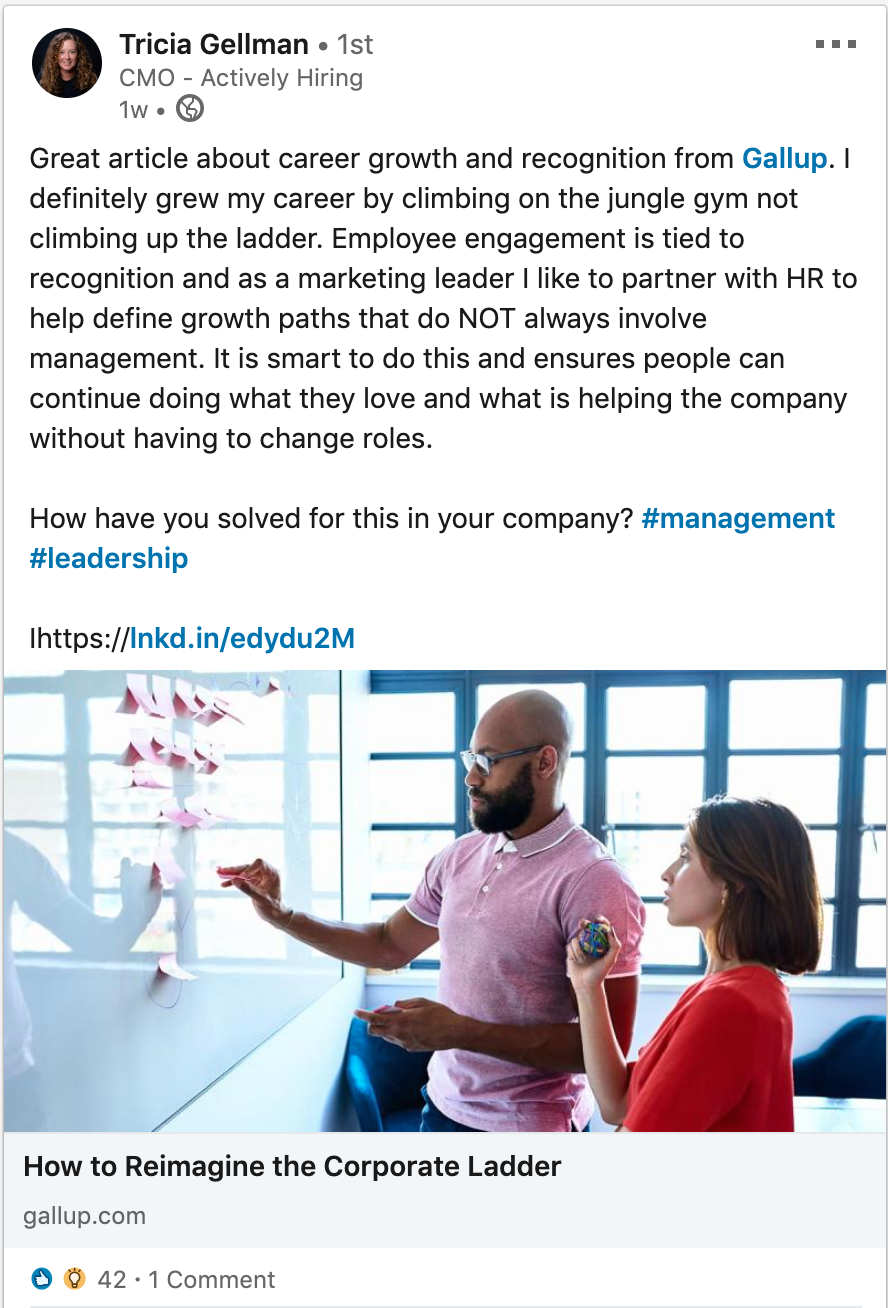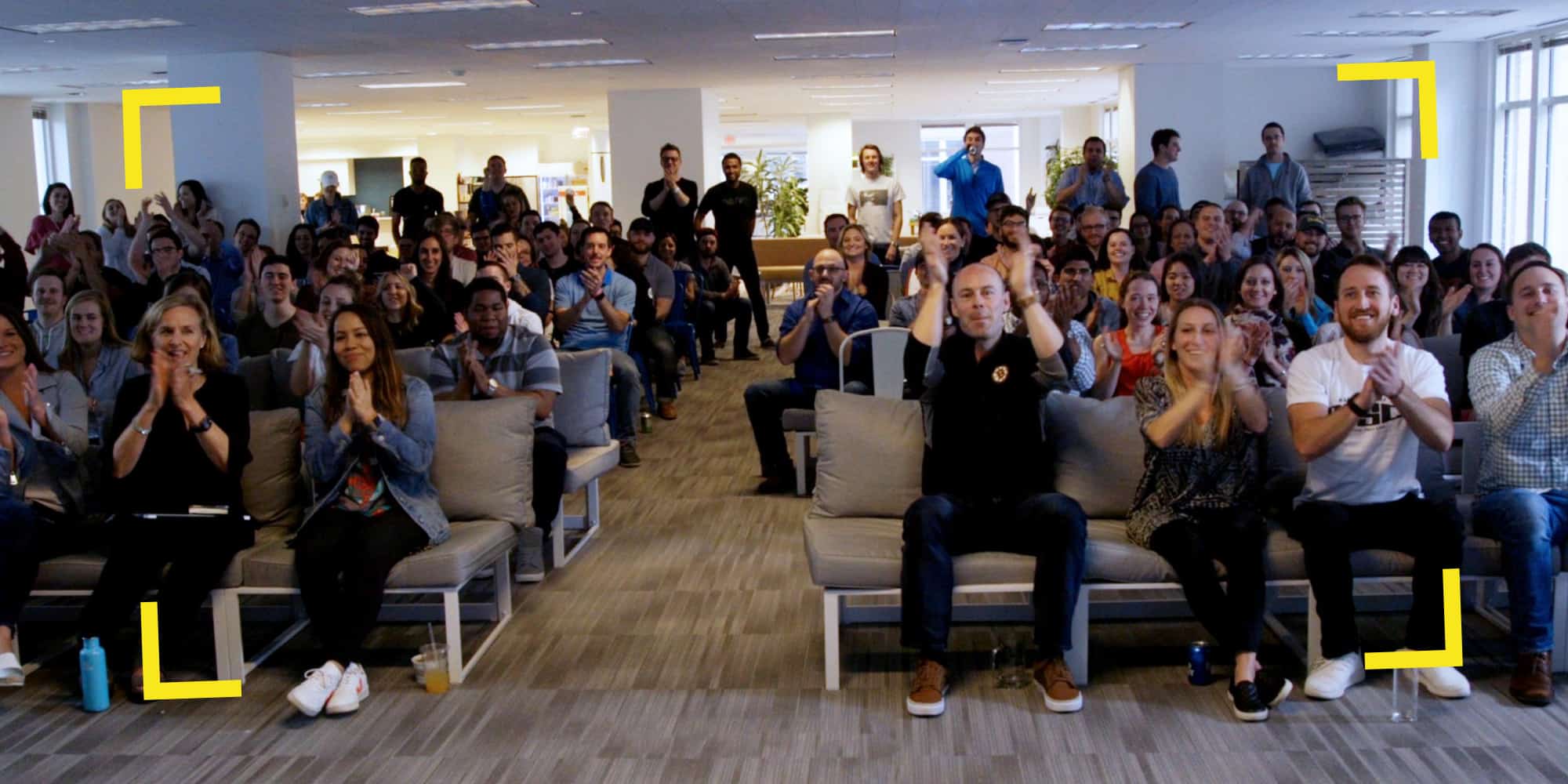
Life isn’t linear.
So why do we expect career paths to be?
? That’s a question I asked myself (and the LinkedIn community) after reading an article from Gallup on reimagining the corporate ladder.
A long time ago, I realized abiding by a stiff corporate hierarchy wasn’t in the cards for me. The more I worked, the more I learned. Through this learning, I was able to explore new opportunities to grow and solve problems.
What didn’t change was the path companies laid out for me. The “this is what you were hired to do, and you’ll only be rewarded by focusing on that one thing,” was a mind-boggling concept to me.

And as I watched my peers struggle to conform to that management ladder, and eventually move on to new opportunities, I decided if I were ever in a position to change things, I would.
Why?
Because watching talented people walk away should be called out for what it is: a waste.
How many opportunities do companies lose out on by failing to foster an environment that encourages employees to develop their interests?
According to Gallup, a lot:
“Two top reasons that people give for leaving their company are lack of career growth and lack of opportunities to do what they do best.”
That same study also found that employees given the freedom to explore and grow in what they love and do best are:
- 6 times more likely to be highly engaged with their work
- 57% less likely to experience burnout
Team building is an important part of my job as Drift’s CMO. And March is a month often associated with career growth, as people begin new promotions and positions announced earlier in the year. This means that beyond measuring marketing’s impact on revenue growth, one big job for me right now is growing the marketing team here at Drift.
But this growth doesn’t just mean new headcount. Internal and personal growth is just as important to me as anything else. And I want to give my team the ability to explore their own jungle gym.
Here’s how I plan to do that, and how you can bring a similar approach to your own team:
Identify Your Team’s Superpowers & Start a Discussion
A talent audit is a good exercise for leaders to identify hidden skill sets that can really benefit the larger team. To conduct this type of audit, choose a rubric that maps the competencies needed to achieve your team’s marketing strategy:
- List your current marketing strategies.
- Map the leadership skills necessary to achieve these strategies.
- Answer the following questions:
- Do you currently have the right leadership in place to execute on these strategies?
- Who are those people and are they currently being utilized to meet these objectives?
- What leadership gaps exist that cannot be filled by current personnel?
Looking at the following example, we see how this exercise would work in practice:

You might find that employees who hold certain competencies are not leading the initiatives that would benefit from their skill set.
People often have a difficult time understanding how their superpowers can be used cross-functionally. If you have a super overachiever who is really going above and beyond – but has expressed a passion to try other things – then it’s your job as a leader to hear them out and help them find the right opportunities to grow.
Too often companies lose top talent to rigid hierarchies, without having open conversations with these employees.
Partner Directly with HR
In my original LinkedIn post, I mentioned that one of the best ways to ensure employees take advantage of all opportunities – not just necessarily moving into management – is to partner directly with HR.
I’m repeating it here again for two reasons:
- HR should always be involved in career and opportunity development. They will know the best language and structure to give around a role and can ensure that it gets pushed through the appropriate channels.
- It shows employees you are serious about their growth in the long-term, and that you are putting real value behind that opportunity.
Align Opportunities to the Larger Company & Marketing Strategy
Involving HR is a critical step for turning interests into job opportunities. But to keep top talent, you need to help employees and leadership easily draw a line between roles and company strategy.
Time and time again, I’ve found that the key to building and expanding any highly successful marketing team is a strong marketing strategy. Unfortunately, many leaders struggle to align this strategy with a comprehensive team and hiring strategy.
We recently wrote a book on how to do just that ?
Written in collaboration with The Predictive Index and The Connective Good, this book offers a ton of value. But one key insight I love is how to not just develop a marketing strategy with company goals in mind, but align new job opportunities back to these strategies and goals.
Doing this ensures that opportunities have long-term value and that employees – and other people in your organization – can see how their contribution directly impacts the business.
How are you helping your employees see their potential?
I love sharing, but I’m also an avid learner. If you have any insight into mentorship and the “career jungle gym” I’d love to hear it! Share how you’re helping employees grow to their full potential in my original LinkedIn post.








